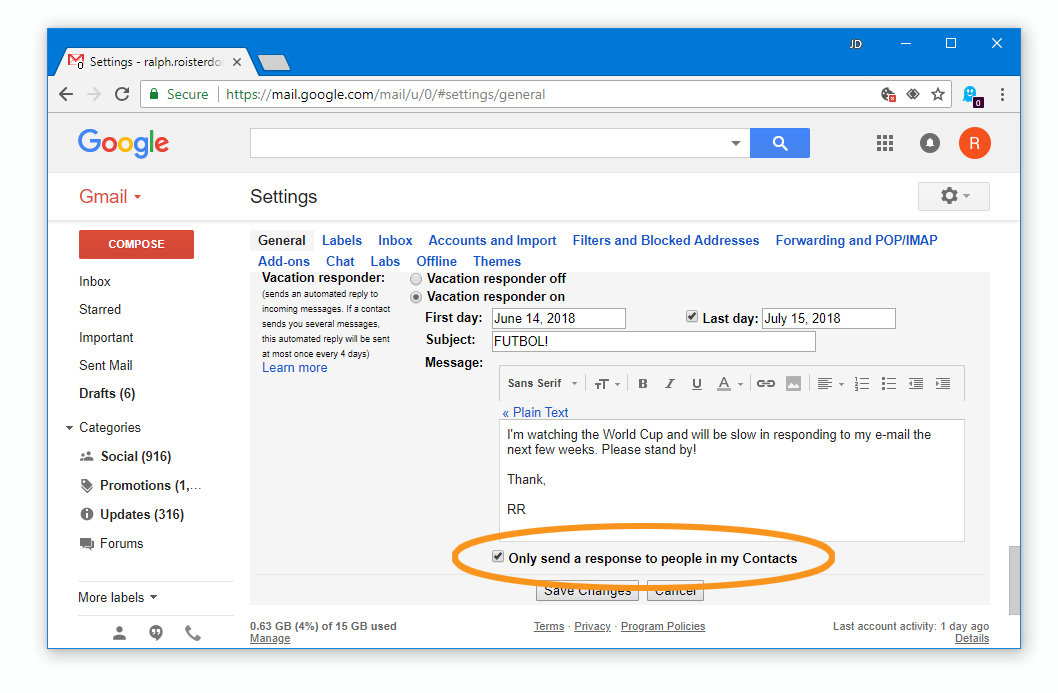How to report art theft on instagram
How do I report stolen content on Instagram?
How to report stolen content on Instagram
Did someone post your photo or video without your permission and without giving credit to your account? Are they ignoring your questions to please give you credit? Or do you just want it gone? You can have Instagram remove this content for you, very easily.
You own the copyright to any photo or video you take and post on Instagram. No one is allowed to repost this content without your permission. Using a specific #hashtag to get your photo featured, is often considered as an equivalent to giving consent. Most people don’t mind if their content is being reposted without permission, as long as proper credit is given.
But if no credit is given, or if you simply do mind, you can easily have the photo or video taken down by Instagram by filing a DMCA report.
This is the link to file a DMCA report on Instagram.
Don’t let the fact that Instagram asks for your personal information scare you off – you don’t have to complete all the fields they are asking for. The minimum amount of information required for the report to be valid, is your name and an email address. You do not have to provide more information than this. You do not have to give them your home address or phone number. If you do provide this, Instagram will not share your home address or phone number with the person you’re reporting.
Also note that you can only report content that violates your own copyright.
Step by step guide to report stolen content
- Click the DMCA link.
- Click the option saying you found content that violates your copyright.
- Click the next pop up to confirm you want to continue with your copyright report.
- Click to add your contact information. As noted above, you only have to provide your name and any email address. Use your real name – not your Instagram account name. You can use your cat account’s email address.
- Confirm your email address.
- Select your country of residence.
- Click on the content you want to report and specify what kind of content it is.

- Add the direct link to the content you are reporting. If the account has blocked you, try to get the link via another Instagram account they have not blocked or ask someone else to get you the link.
- Select why you are reporting this content.
- Click to supply your original work and select the type of content this is.
- Add the direct link to the post on your own instagram account.
- Optional: you can add attachments that prove you own the copyrights to this content.
- Confirm you have the copyright to this content.
- Confirm that you agree.
- Add your electronic signature (just type your name).
- Submit. And you’re done!
- Instagram will send you an email confirming your report.
- Instagram will send you an email once they have removed or disabled access to the content. This is usually within 48 hours.
This is what a filled out DMCA form would look like.
What if…
- …I want to report a profile picture?
Follow the steps above, except at step 8 you link to the general profile of the person who is using your picture as profile picture. Then in the same field where you put the link, state very clearly that you are NOT reporting the whole account and that you are only reporting the PROFILE PICTURE.
Then in the same field where you put the link, state very clearly that you are NOT reporting the whole account and that you are only reporting the PROFILE PICTURE.
- …Instagram does not believe I have the copyright to this content?
It has happened to me several times before that for various reasons, Instagram could not instantly verify I had the copyright to the content I was reporting. For example when I had deleted the content from my own profile, or because the thief had an early unwatermarked version that I deleted from my profile and that I had replaced for a watermarked version on my account.
Do not despair. I have never not been able to get stolen content taken down. If Instagram does not take down your stolen content right away, simply reply to their email with additional proof that it is your copyright.
For example, provide the full resolution photo that is larger in size/crop than what can be found anywhere on the internet, take a photo of your cat in the exact same spot and include a physical note saying your cat belongs to [your name/ig account name], if there are interviews by reputable sources that confirm you are the owner of this cat (account) then link to that, etc. Be creative – if you have the copyright then there are multiple ways to prove it besides providing a link to an instagram post.
Be creative – if you have the copyright then there are multiple ways to prove it besides providing a link to an instagram post.
General Tips
- This does not only apply to Instagram. If you find your content on any other (social media) platform such as Facebook, Twitter, Tumblr, Reddit, Imgur, you name it: find their DMCA form and fill it out. They all basically work the same way.
- It really helps if you watermark your photos. You can do so in a manner that is not visually distracting. The benefits of this are that people can easily identify you as the owner of the photo which means that:
1) Even if credit is not given, they can still find you if they like what they see.
2) People can notify you if they see your content being stolen.
For me, 100% of copyright reports I file are based on someone notifying me of the theft. Often these come from people I do not know, and I am very grateful to them.
3) Instagram can very easily determine that it is your content and if you file a report, the stolen content will be taken down very fast.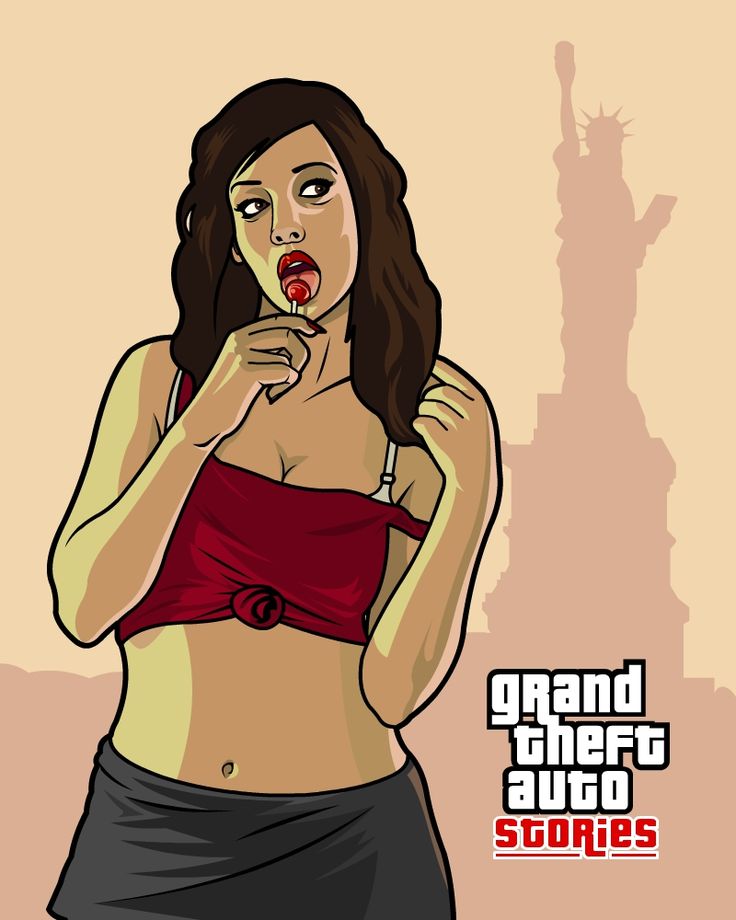
- If you have a lot of copyright reports to deal with, you can make this more manageable by creating a collection called ‘report’ in your Instagram collections. Simply save all the stolen content to this collection when you see it, and report them when you have time.
- Once you’ve found stolen content of yours, it’s very likely that this account does not credit any other content they post either. It would really help if you scan through the feed to see if you can identify the content of others, and if so, notify them. If the person you notified doesn’t know how to report, send them the link to this page (it works in Instagram DMs). This is the only way to put a stop to accounts that repeatedly violate copyright. If they get reported for copyright violations by many individuals, eventually their account will be taken down.
Someone stole your photo on Instagram? Here’s how to file a copyright infringement claim
I’m sure that all of us have had at least one of our images stolen at some point.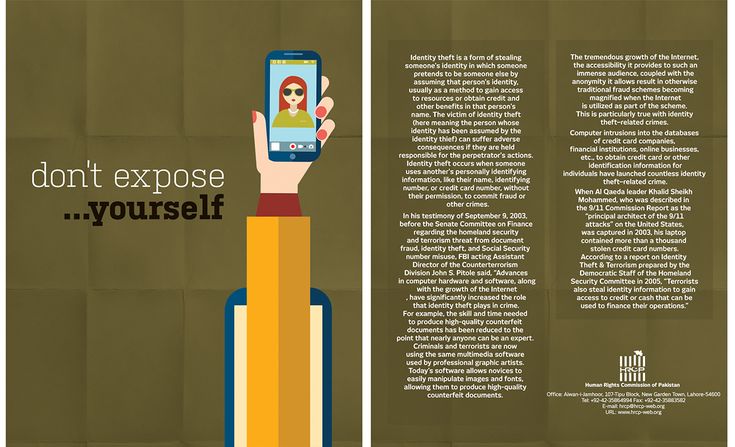 In this video, Brendan van Son shares how he dealt with copyright infringement when one of his images ended up on someone else’s Instagram, promoting a business. He guides you through the process of filing a claim, and if you’ve ever had a photo stolen on Instagram, I believe you’ll find this video useful.
In this video, Brendan van Son shares how he dealt with copyright infringement when one of his images ended up on someone else’s Instagram, promoting a business. He guides you through the process of filing a claim, and if you’ve ever had a photo stolen on Instagram, I believe you’ll find this video useful.
Advertisements
Generally, people should ask you for permission before using your image. If you discover someone posted your work with credit, you may care or you may not, it’s up to you. But even if someone credits you, if you don’t want other people to use your image, you can ask them to take it down if you hadn’t given them permission.
In Brendan’s case, he generally doesn’t care if someone shares his photos for non-commercial purposes and if he’s credited properly… But, there’s always a line. For Brendan, it’s when someone uses one of his images without permission for commercial purposes, to directly gain profit. Big brands don’t usually make that mistake (although it happens). It’s mainly smaller brands that do something like this, which is what happened in Brendan’s case.
It’s mainly smaller brands that do something like this, which is what happened in Brendan’s case.
A Greek hotel comparison service tagged Brendan on Instagram, on an image he took. It was used to directly promote a business and gain profit. So, instead of messaging them to take the photo down, Brendan went straight to filing a copyright infringement claim on Instagram. The process seems a bit complicated, but it’s for a reason. It’s both to make sure you understand your rights, but probably also to prevent people from filing fake claims.
Advertisements
At 6:18 of the video, Brendan talks about the process of filing the claim. But in a nutshell, it looks like this:
First, go to the stolen image and click on the triple dot > Report > It’s inappropriate. Choose “Intellectual property violation” and click on Learn more. You’ll get lots of information, but they’re informing you of your rights, so don’t just skip it. Then click on “Learn more about copyright violations. ” You’ll find a form linked and you’ll need to fill it if you want to file a claim. Then, choose “Copyright” within this claim and select the reason for filing it: “I found a content which I believe infringes my copyright.” Finally, share the information Instagram requests from you. You’ll also need to share the link to where you posted your photo, in order to prove that it’s indeed yours.
” You’ll find a form linked and you’ll need to fill it if you want to file a claim. Then, choose “Copyright” within this claim and select the reason for filing it: “I found a content which I believe infringes my copyright.” Finally, share the information Instagram requests from you. You’ll also need to share the link to where you posted your photo, in order to prove that it’s indeed yours.
After filing the copyright infringement claim, Brendan says that the image was quickly taken down from the account that stole it. He got an email from Instagram saying that they “dealt with the issue,” but he’s not quite sure how they deal with it. Since the account remains active, it was probably just warned not to steal images anymore. I hope that the people behind it have started asking for permission from photographers, at least.
I have one experience of a photo of mine being used for false advertising. Although I believe it was purchased, I wasn’t able to confirm it. I contacted everyone I could and when I didn’t receive any answers from anyone except nice people from EyeEm, I wrote an article about the whole case. That was the weirdest and, at the same time, the most amusing use of my photo I’d ever seen.
That was the weirdest and, at the same time, the most amusing use of my photo I’d ever seen.
Advertisements
On the other hand, when my photos are stolen from social networks and posted without my permission, I usually message the person who posted it. After that, they either credit me or take the image down, so I haven’t had any big problems so far.
How do you deal with people or businesses who post your photos without permission? Do you message them, report them, or even take them to court? Share your experiences and stories in the comments below.
[Someone STOLE my Image on Instagram! via FStoppers]
Most notorious art thefts: Mona Lisa, Monet's paintings, our Instagram
In early August, someone hacked and stole our Instagram account. The attackers did not demand a ransom and simply disappeared, leaving us without an important communication channel. During this time, we managed to go through all the stages of grief and even temporarily move to account A + A . Then we remembered that this had often happened before - with great works of art. We'll tell you which ones.
Then we remembered that this had often happened before - with great works of art. We'll tell you which ones.
One of the most notorious thefts of paintings is, of course, the disappearance of the Mona Lisa in 1911. As noted in the book "1913. Summer of the whole century ”Florian Illies, the police initially suspected Pablo Picasso of stealing a masterpiece by Leonardo da Vinci, but he had an alibi. And as specified in the book “Everything you know about art is not true,” the poet Guillaume Apollinaire was another suspect in the case.
The man who stole the painting returned it himself. Introducing himself as Leonardo, he contacted the Florentine antiquarian Alfredo Geri and stated that he wanted to transfer "this masterpiece to the country in which she was born and inspired", recalling that Leonardo da Vinci was Italian.
A chronicle of the last peaceful year on the eve of the First World War, in which many events took place that became significant for the culture of the 20th century.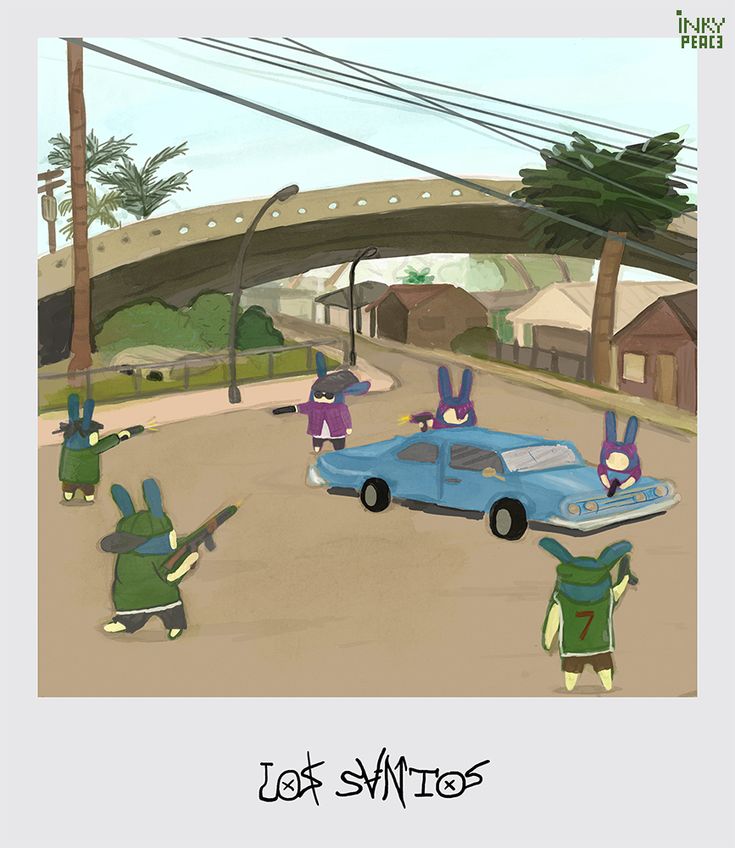
Geri, together with the director of the Uffizi Gallery, Giovanni Poggi, met with Leonardo. He took them to his hotel room, where he showed them a suitcase with a double bottom - there the stolen painting was kept, safe and sound. Geri and Poggi promised "Leonardo" a reward of 500 thousand lire, but instead, a detachment of carabinieri soon knocked on the door of his room.
The kidnapper received seven months in prison (and love and recognition among Italians). The picture was exhibited in Italy for some time, but then it was nevertheless transferred to France.
“She left the Louvre as a painting and returned as a mystery,” writes Illies.
The author describes the kidnapper as follows: “Leonardo's name was Vincenzo Perugia, he was thirty-two years old, and at the time of the theft he worked as an assistant glazier in the Louvre. He then placed the Mona Lisa in a controversial glass frame. And since he put it there, he also knew the easiest way to get it out of there. At night, he hid in the museum, pulled out the picture, wrapped it in canvas, and in the morning calmly left the Louvre - the guards, who knew him well, only nodded to him.
At night, he hid in the museum, pulled out the picture, wrapped it in canvas, and in the morning calmly left the Louvre - the guards, who knew him well, only nodded to him.
In "Everything you know about art is not true", however, it is noted that after the return of the painting there were rumors that it was a fake, an exact copy of the painting that was never found. However, an official delegation sent from Paris to Italy in 1913 confirmed its authenticity.
This book reveals the truth about the first photobomb in 1843, the destruction of Van Gogh's Sunflowers during World War II, how Damien Hirst's Dot Painting was sent to Mars, and much more.
“Lovers of hoaxes dug even deeper. In 1912, when the painting was still considered lost, an art historian stated that it had not left the walls of the Louvre. He had reason to believe that the Gioconda was badly damaged as a result of the attack - sulfuric acid was splashed on it - and it was replaced with a copy, ”the book says.
Tells about the theft of the Mona Lisa and the book Why Paintings Have Names is a detective story about the theft of paintings from a magical art museum. The book, however, does not avoid other thefts of works of art.
In this book you will find answers to questions about contemporary art hidden in a detective story.
For example, Francisco Goya's Portrait of the Duke of Wellington was stolen from the British National Gallery in 1961. The thief turned out to be a bus driver who demanded the amount paid for the painting at the auction. He was going to spend the money on charity. And eight years later, in 1969, unknown people stole Caravaggio's "Christmas" in Palermo.
Cost "Christmas" is valued at $20 million and has never been found.
The book also tells about the theft of the sash of the Ghent altar in 1934 from the cathedral in Ghent and eighteen paintings, jewelry and statuettes worth two million dollars (among them - works by Rembrandt and Delacroix) in 1972 in Montreal.
The year 1991 turned out to be rich in thefts - then five paintings by the artist were stolen from the Van Gogh Museum, including "The Potato Eaters". The canvases were quickly found, they ended up in a car abandoned at the museum. In the same year, the largest theft of works of art in the history of the Czech Republic took place: Pablo Picasso's paintings "Mandolin and glass of Perno", "Absinthe and cards", "Port in Cadaqués" and "Table with a glass" by Pablo Picasso were stolen in Prague. True, before the end of the year they managed to find them.
In 1985, the works of Auguste Renoir, Berthe Morisot and Claude Monet were stolen from the Marmottan Museum in Paris (among them was his famous painting "Impression. Rising Sun"). Five years later, the missing paintings were found in an abandoned villa in the south of Corsica.
Finally, the theft of the Mona Lisa from the Louvre is also discussed in the still unpublished book The Museum Out of Self Calum Storri. We publish a preprint from it translated by Alexander Dunaev. It tells how Picasso and Apollinaire were connected with the loss of the painting, and the theft of the Mona Lisa forever changed its cultural significance and adapted it for eternity.
We publish a preprint from it translated by Alexander Dunaev. It tells how Picasso and Apollinaire were connected with the loss of the painting, and the theft of the Mona Lisa forever changed its cultural significance and adapted it for eternity.
… The disappearance of the Mona Lisa set off a chain of events that is now seen as a metaphor for the complex relationship between modernism and the museum. The two main characters of this story, the painter Picasso and the poet Apollinaire, were directly involved in the development of modernist art. There is no single version of what preceded Apollinaire's arrest. Opinions also differ about the sequence of events that led up to it, although they were certainly accelerated by the scandal caused by the theft of the Mona Lisa and, moreover, by how easily she was carried out of the gallery. Geri Pierre, a friend of Apollinaire, who for some time served as his secretary, had his own story of the theft. He actually had a lot of stories. Shortly before that, he had returned to Paris from the Klondike, gripped by the gold rush, and still sported yellow cheeks and a cowboy hat. Apollinaire described him under the name of Baron Iñas d'Ormesan in The Heresiarch and K about ". Pierre took this title as a pseudonym. In 1907, he took out two Iberian figurines from somewhere and then handed them to Picasso. Whether Picasso knew about the origin of these figurines is not exactly known, but some sources claim that Pierre advised the artist to keep them secret. When the Mona Lisa disappeared, Pieret brought another sculpture he had stolen from the Louvre to the editorial office of one of the newspapers: it was a kind of publicity stunt and a way to draw attention to the unreliability of museum protection. Apollinaire published an article on this subject in the Paris-Journal, in which he concluded: "The Louvre is worse protected than any Spanish museum."
Shortly before that, he had returned to Paris from the Klondike, gripped by the gold rush, and still sported yellow cheeks and a cowboy hat. Apollinaire described him under the name of Baron Iñas d'Ormesan in The Heresiarch and K about ". Pierre took this title as a pseudonym. In 1907, he took out two Iberian figurines from somewhere and then handed them to Picasso. Whether Picasso knew about the origin of these figurines is not exactly known, but some sources claim that Pierre advised the artist to keep them secret. When the Mona Lisa disappeared, Pieret brought another sculpture he had stolen from the Louvre to the editorial office of one of the newspapers: it was a kind of publicity stunt and a way to draw attention to the unreliability of museum protection. Apollinaire published an article on this subject in the Paris-Journal, in which he concluded: "The Louvre is worse protected than any Spanish museum."
During the period when Pierre lived in Apollinaire's apartment, the figurine was kept there, on a fireplace shelf. The poet, who knew what his friend was doing, thought that the theft of the famous painting was also his work and that now, what good, the loss of figurines kept by Picasso might be discovered. Fearing that they would be expelled from France as foreigners, the Spaniard Picasso and the native of Rome, Apollinaire, decided to get rid of the evidence by throwing it into the Seine. Before carrying out their plans, the friends (as Picasso's then-partner Fernanda Olivier recalls) spent the evening playing cards: "... the whole evening, waiting for the exciting moment of betraying works of art to water - the" moment of crime "- they only pretended to play nonchalantly playing cards, imitating, of course, some bandits they read about.” Then Apollinaire and Picasso went outside with a suitcase containing figurines. They wandered the dark streets of Paris for a long time and eventually abandoned their intention - perhaps feeling guilty that they wanted to get rid of such valuable things (although it is possible that they simply did not have the opportunity to safely throw the figurines into the river).
The poet, who knew what his friend was doing, thought that the theft of the famous painting was also his work and that now, what good, the loss of figurines kept by Picasso might be discovered. Fearing that they would be expelled from France as foreigners, the Spaniard Picasso and the native of Rome, Apollinaire, decided to get rid of the evidence by throwing it into the Seine. Before carrying out their plans, the friends (as Picasso's then-partner Fernanda Olivier recalls) spent the evening playing cards: "... the whole evening, waiting for the exciting moment of betraying works of art to water - the" moment of crime "- they only pretended to play nonchalantly playing cards, imitating, of course, some bandits they read about.” Then Apollinaire and Picasso went outside with a suitcase containing figurines. They wandered the dark streets of Paris for a long time and eventually abandoned their intention - perhaps feeling guilty that they wanted to get rid of such valuable things (although it is possible that they simply did not have the opportunity to safely throw the figurines into the river). Most sources agree that the next morning Apollinaire took the figurines to the editorial office of the same newspaper where Pieret had previously visited. He was promised that his name would not be disclosed, but the very next day the police came to his apartment, and it was not difficult for them to find evidence regarding the Louvre figurines. As a result, the poet was arrested for selling stolen goods and on suspicion of involvement in the abduction of the Mona Lisa.
Most sources agree that the next morning Apollinaire took the figurines to the editorial office of the same newspaper where Pieret had previously visited. He was promised that his name would not be disclosed, but the very next day the police came to his apartment, and it was not difficult for them to find evidence regarding the Louvre figurines. As a result, the poet was arrested for selling stolen goods and on suspicion of involvement in the abduction of the Mona Lisa.
A few days later, Picasso was taken to the police station. Oddly enough, during interrogation, he generally denied that he knew Apollinaire, and was soon released without charge. Apollinaire was later released on probation, and after the intervention of influential friends, the charges against him were dropped. However, being in prison made a strong impression on him, and although he did not break off relations with Picasso, the friendship between them became less strong. There are eloquent lines in his poem "Zone":
In Paris you are under investigation alone
You are in prison like a miserable picture thief.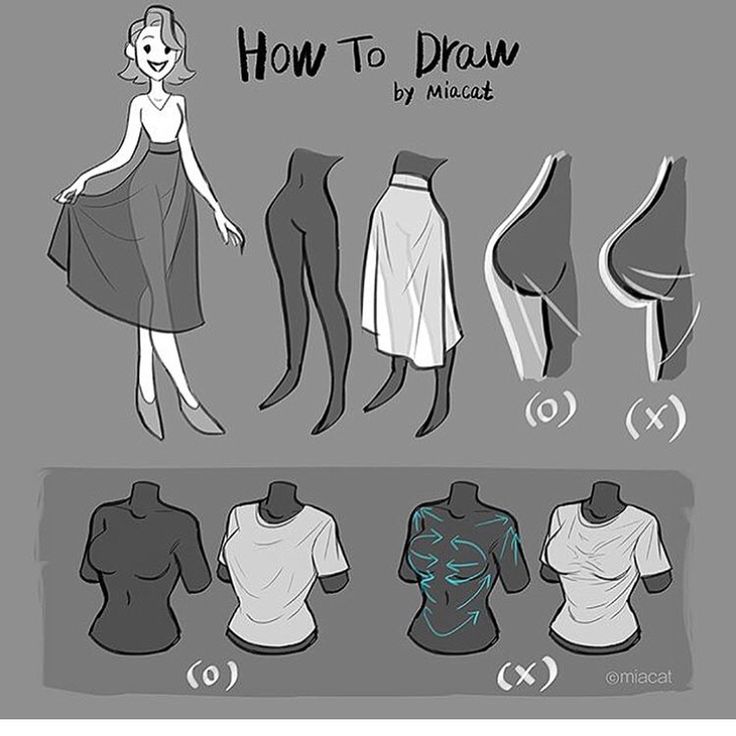
On the pages of the pamphlet "Futuristic Anti-Tradition, Manifesto-Synthesis", published in Milan on June 29, 1913 in support of the Italian Futurists, Apollinaire symbolically presented the "rose" to his artist friends and sent "MER ... DE ..." (French shit ) “academisms… historians… museums…” In this way, he may have expressed unkind feelings towards the Louvre and at the same time joined Marinetti’s futurist manifesto:
Museums are cemeteries!.. They are undoubtedly similar in a gloomy mixture of many bodies unknown to each other. Museums are public bedrooms where some bodies are doomed to rest forever next to others, hated or unknown... Turn the channels to flood the museums!
Loss and loss
Some time later, a Florentine gallery owner received a letter offering to buy the Mona Lisa. He decided that this was a hoax, and replied that he only worked with originals, but did not have the opportunity to go to Paris to look at the painting. Soon a man who called himself Leonardo Vincenzo visited him. He said that the Mona Lisa was in his hotel room, demanded half a million lire and a guarantee that the painting would remain in its homeland, Italy. The gallerist warned the director of the Uffizi and the police, who were not slow to come to the hotel and set up an ambush. The next day, a gallery owner and director of the Uffizi came to Leonardo Vincenzo's room. Before their eyes, Vincenzo removed the Mona Lisa from the secret compartment at the bottom of the suitcase, which was like two drops of water similar to the suitcase where Apollinaire and Picasso hid the Iberian figurines, and a few years later served as the prototype for Marcel Duchamp's "portable museum" - " Boxes in a suitcase. All three went with the painting to the Uffizi to check if it was really the Mona Lisa and not a copy. There Vincenzo was arrested, after which it turned out that his real name was Vincenzo Perugia and a few years earlier he got a job as a worker at the Louvre.
Soon a man who called himself Leonardo Vincenzo visited him. He said that the Mona Lisa was in his hotel room, demanded half a million lire and a guarantee that the painting would remain in its homeland, Italy. The gallerist warned the director of the Uffizi and the police, who were not slow to come to the hotel and set up an ambush. The next day, a gallery owner and director of the Uffizi came to Leonardo Vincenzo's room. Before their eyes, Vincenzo removed the Mona Lisa from the secret compartment at the bottom of the suitcase, which was like two drops of water similar to the suitcase where Apollinaire and Picasso hid the Iberian figurines, and a few years later served as the prototype for Marcel Duchamp's "portable museum" - " Boxes in a suitcase. All three went with the painting to the Uffizi to check if it was really the Mona Lisa and not a copy. There Vincenzo was arrested, after which it turned out that his real name was Vincenzo Perugia and a few years earlier he got a job as a worker at the Louvre. His naive attempt to carry out (and not free of charge) the restitution of a cultural object was crowned with only partial success: the painting was exhibited in Florence, Rome and Milan, and then returned triumphantly to Paris (the English artist William Nicholson captured this event on the canvas "The Return of the Mona Lisa"; rOf course , in this picture, the Mona Lisa is almost invisible behind a dense crowd of people).
His naive attempt to carry out (and not free of charge) the restitution of a cultural object was crowned with only partial success: the painting was exhibited in Florence, Rome and Milan, and then returned triumphantly to Paris (the English artist William Nicholson captured this event on the canvas "The Return of the Mona Lisa"; rOf course , in this picture, the Mona Lisa is almost invisible behind a dense crowd of people).
The Italian nationalist poet Gabriele D'Annunzio tried to attribute the kidnapping to himself and hinted that he had instructed Perugia to steal the painting, and in 1920 claimed that the Mona Lisa was in his hands, but because it caused his feeling of "satiation and disgust", he ensured her return to the Louvre.
A few years later, the surrealists (this name was given to them by the same Apollinaire) decided to take possession of Leonardo's painting for their own purposes. Now the game was fair. At 19In 1919, Marcel Duchamp added a mustache and goatee to a cheap reproduction of the Mona Lisa and turned it into an illustration for one of his risky puns (the work is called “L. H.O.O.Q.”: if you pronounce these letters in French, they sound indistinguishable from the words “she has hot ass"; Duchamp later removed the added hair from Mona Lisa's face, thereby returning her "original" look, but retained the pun: this version is called "LHOOQ shaved"). Later reproduction of "L.H.O.O.Q." entered the aforementioned "Box in a suitcase". In turn, Salvador Dali, with an eye on Duchamp, enlarged the mustache painted on by the latter and narcissistically turned the Mona Lisa into his self-portrait. Finally at 19In 30, Fernand Léger included a copy in his painting La Gioconda with Keys, stating that it was "an object like any other."
H.O.O.Q.”: if you pronounce these letters in French, they sound indistinguishable from the words “she has hot ass"; Duchamp later removed the added hair from Mona Lisa's face, thereby returning her "original" look, but retained the pun: this version is called "LHOOQ shaved"). Later reproduction of "L.H.O.O.Q." entered the aforementioned "Box in a suitcase". In turn, Salvador Dali, with an eye on Duchamp, enlarged the mustache painted on by the latter and narcissistically turned the Mona Lisa into his self-portrait. Finally at 19In 30, Fernand Léger included a copy in his painting La Gioconda with Keys, stating that it was "an object like any other."
Yet the story of the return of the painting and the denouement of the story remain unclear. The theft was the turning point of the Louvre into a "museum beside itself." The absence of the Mona Lisa forever changed its meaning - Leonardo's famous painting clashed with modernity and modernism. In a sense, it really was "removed for photography": from now on, it began to be reproduced to infinity. After the "Mona Lisa" was taken out of the museum and hidden, she forever ceased to be an object that occupies a clear place on the wall and in the imagination, and became a nomad. She might not have returned to the Louvre, but although this did not happen, it has not been possible to see her since. The place where the Mona Lisa hung calmly on the morning of August 22, 1911 years old, now occupies a glass box, surrounded by a crowd of people. Henri Lefebvre wrote:
After the "Mona Lisa" was taken out of the museum and hidden, she forever ceased to be an object that occupies a clear place on the wall and in the imagination, and became a nomad. She might not have returned to the Louvre, but although this did not happen, it has not been possible to see her since. The place where the Mona Lisa hung calmly on the morning of August 22, 1911 years old, now occupies a glass box, surrounded by a crowd of people. Henri Lefebvre wrote:
The tourist trade, whose task is to attract crowds to a certain place - an ancient city, a beautiful view, museums, etc. - destroys this place when it reaches its goal: a city, a view , the exhibits are invisible behind the tourists, who can only see each other.
How many photographs taken by these tourists show only the reflection of the photographer or a glare from the flash ... When visitors to the Louvre photograph the painting, the box in which it rests becomes the mirror predicted by Louis Beru. Crowds are still looking for the missing Mona Lisa, and she is always missing. There is a gaping hole in the very heart of the museum, which is the definition of all museums. Melancholy permeates the Salon Square and seeps into Paris, the city of lost things.
Crowds are still looking for the missing Mona Lisa, and she is always missing. There is a gaping hole in the very heart of the museum, which is the definition of all museums. Melancholy permeates the Salon Square and seeps into Paris, the city of lost things.
I retroactively appointed Apollinaire as the first curator of the Musée der Beside Himself as compensation for an unjust arrest. The fact that his temporary possession of figurines stolen from the Louvre coincided with this story gives him a special role in the history of the museum. Without realizing it, he was a rebel who contributed to the rethinking of the Louvre and, more broadly, the museum in general. With his participation, the space of the museum began to migrate from presence to absence: the meanings of the exhibits of the collection floated, became more and more fluid and unclear.
Theft and destruction in the life of works of art
Theft and destruction in the life of
works of art.
• Dear children, welcome to
today's lesson. Today we will
get acquainted with museum
works of art that were
stolen and destroyed during the exposition
.
• The first object of our acquaintance, about which
we could not say, will be the most famous
painting in the world - "Mona Lisa"
or "La Gioconda". The popularity of
"Mona Lisa" is largely due to
incident that happened to her
. We will talk about this
a little later, but first
we will recall our dear picture.
"Mona Lisa" or "Gioconda"
Leonardo da Vinci
• And now let's get acquainted with the
incident itself.
• 110 years ago a crime was committed
that went down in history
as the robbery of the century: on August 21, 1911, the Mona Lisa was stolen from Louvre
Leonardo da Vinci.
the French government, and
millionaires, and avant-garde artists were accused of this. However, the perpetrator was
neither an artist nor a mental patient.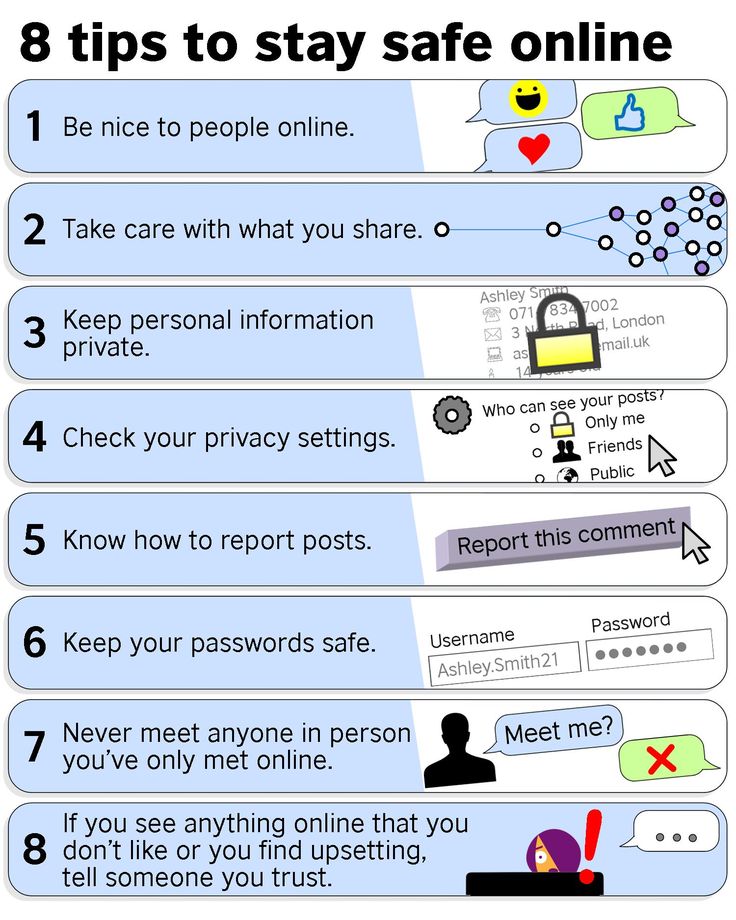
The solution was very close, but it was possible to return the
picture only after 2 years.
• The theft became known the next day,
when the artist-restorer came to the Louvre,
to make a copy of the Mona Lisa, but
did not find the painting in its usual place.
All exits from the Louvre were immediately blocked,
conducted a search, which, alas, did not give
results. The case was entrusted to one of the best
French detectives - Alphonse
Bertillon. Suspicion fell on museum employees
, including the director, who
claimed in a recent interview that
stealing the Mona Lisa is as unrealistic as stealing the
bells of Notre Dame Cathedral in Paris. The jokers quipped: “Now it’s the Eiffel Tower at
!”
Place where the Gioconda hung in
Louvre, 1911
• Bertillon used anthropometric
method:
height, head circumference, arm and leg length, etc. were measured for each suspect.
The indicators were compared with the data of criminals entered in the
card index - and in this way the attacker was
determined.![]()
• At the same time, the founder of the anthropometric
method Bertillon considered fingerprinting
a pseudoscientific method, which played a fatal
role in this detective story. The fact is,
that on the side staircase, which was used
only by the servants of the Louvre, they found an empty
frame of "La Gioconda", a trace of
paint with a fingerprint was visible on it. And in the police database
this fingerprint could be used to find
an attacker who had previously had
problems with the law.
• The young Italian Vincenzo Perugia
, shortly before the incident, got a job in the
museum as a seasonal worker. He was a
glazier and made a protective screen
for the great da Vinci painting. And then, on Monday
, when there were no
visitors at the Louvre, he entered the hall, took a picture from
walls, went out to the side stairs, took out the
frame, wrapped it in a jacket and calmly left the
museum.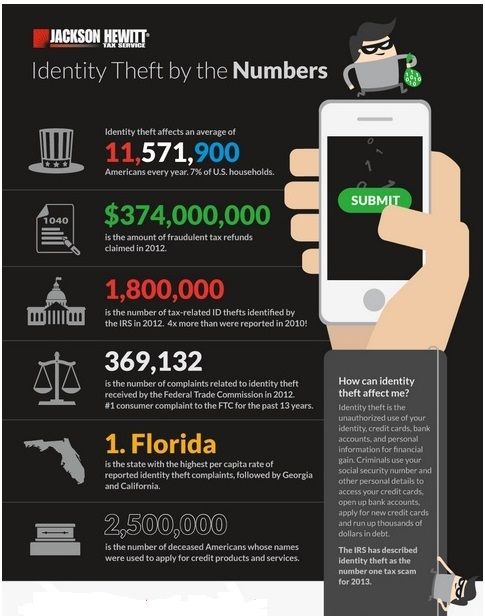
Vincenzo Perugia. Page from criminal case
• Among the suspects was also the Argentinean
collector Eduardo de Valfierno, who shortly before the
abduction ordered 6 copies of Mona Lisa. He sold all copies of
, passing them off as stolen originals. According to some
data, it was he who organized the abduction of the painting, and
Perugia became just a performer. Making millions
on fakes, Valfierno disappeared - he no longer needed the original
.
• Whoever was the true organizer of the crime,
the perpetrator had to get rid of the stolen
on his own. This is where everything unfolded. In December 1913,
a Florentine antiquarian received a letter from France with an offer to buy
da Vinci's Gioconda. Antiquary
invited him to meet, and soon a young man arrived in Florence
, who announced that he had decided to return to
his homeland a work of Italian art stolen by
French. The antiquary conducted an examination and, having convinced himself of the authenticity of the
painting, contacted the police.
Mona Lisa in Florence, 1913
Return of the Mona Lisa to the Louvre,
1914
• Vincenzo Perugia did not deny his guilt
and admitted that he had committed the theft with
for the sole purpose of restoring
historical justice. He wanted
to return to the Italians what
belonged to them by right. And since the trial took place in
Florence, his arguments were valid:
offenders were sentenced to only one
year of imprisonment. "Mona Lisa" for another
was exhibited in museums in Italy for another six months, and then
was returned to France. That's just until
there are still those who doubt in
that the original returned to the Louvre, and not
a copy of the famous masterpiece.
Reproductions of the painting "Mona Lisa"
at the exhibition "The Genius of Da Vinci" in
Moscow
The largest robbery
of the American Museum of Art
• Another well-known robbery was
the theft of 13 paintings from the US Museum.
• On March 18, 1990,
thieves dressed as police officers entered the Isabella Stewart
Gardner Museum in Boston and carried out the
largest robbery in US history, which
is still unsolved. The thieves
handcuffed the museum's night watchmen under the
pretext that they had a warrant for their arrest.
• Despite being captured by
security cameras and motion sensors,
the perpetrators stayed at the
crime scene for 81 minutes without anyone stopping them.
According to some estimates, the cost of one
of the stolen paintings amounted to 200
million dollars. This is the "Concert" by Jan
Vermeer, written in the second half of
of the 17th (17th) century.
"Concert" by Jan Vermeer
• Also among the 13 stolen masterpieces
was Rembrandt's painting "Storm
on the Sea of Galilee". The cost of all
stolen paintings was estimated at 300
million dollars, but some
experts argued that these
paintings could cost much more. Many
Many
paintings were cut out of their frames, which is
allowed investigators to
assume that the perpetrators did not really understand something
in art.
painting by Rembrandt "Storm
on the Sea of Galilee".
Robbery of the Munch Museum in Oslo
• The next resonant robbery was
the theft of Edvard Munch's paintings.
• On August 22, 2004, masked gunmen broke into the Munch Museum in Oslo,
Norway in broad daylight
and stole two paintings by Edvard Munch
The Scream and The Madonna. Masterpieces were found by
police in 2006, and each of the paintings had
showed signs of damage, so it took
another 2 years to restore them before
returned to their place in the museum.
• The Scream is
's most famous painting and one of the most recognizable in the world. Her value for
is $82 million, according to
The Telegraph.
Edvard Munch "The Scream"
• Next, consider the paintings that
were attacked by
vandals (people who damage
monuments of art and culture). After
After
which took more than one year to
the restoration of world masterpieces.
Damaged paintings
by vandals.
• “Ivan the Terrible kills his son” Ilya
Repin
• “Ivan the Terrible and his son Ivan on November 16, 1581
” (also known as “Ivan
the Terrible kills his son”) is one of the most famous and controversial
Russians paintings. On
it depicts the infamous king,
embracing his dying son, who is
in his arms, while on the face of the king there is a distinct
sadness and horror are visible. In May 2018, this
piece of art was attacked by a man
who went to see the painting after
drinking a fair amount of alcohol.
He lifted one of the metal posts
used to hold the
rope fence, then hit the painting with it, breaking through the protective glass
and tearing the canvas.
Night Watch by Rembrandt
Night Watch by Rembrandt was created in 1642
. The painting depicts soldiers,
s on the night watch, watched over by
commanders.






